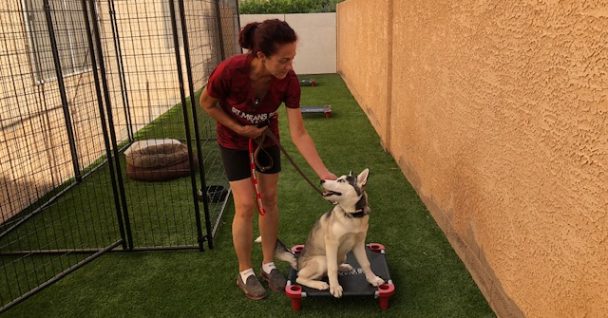
Signs Your Dog Needs More Training (And How to Help) Sit Means Sit Aliante
Training your dog isn’t a one-time event—it’s an ongoing process that evolves with your dog’s age, environment, and behavior. Whether you’ve just brought home a new puppy or your adult dog is starting to develop some bad habits, knowing when it’s time to refresh their training is essential for a happy and well-behaved pet. At Sit Means Sit Aliante, we specialize in dog behavior training that helps dogs (and their owners) live in harmony. Here are some common signs your dog may need more training—and how you can help them get back on track.
1. Pulling on the Leash
If your dog turns every walk into a tug-of-war, it’s a clear sign they need more leash training. Not only is leash pulling frustrating, but it can also be dangerous if your dog suddenly darts toward traffic or another animal. A well-trained dog should walk calmly beside you, not drag you down the sidewalk.
How to Help:
Start with short, focused training sessions in low-distraction environments. Use positive reinforcement and reward calm walking behavior. If leash pulling persists, a professional dog behavior training program can offer lasting solutions tailored to your dog’s needs.
2. Not Coming When Called
Reliable recall is one of the most important commands your dog should know, especially in off-leash situations. If your dog ignores you when you call their name, it could lead to unsafe scenarios like running into a street or getting lost.
How to Help:
Practice recall daily with treats and praise. Start indoors or in a fenced yard before working in more distracting environments. If your dog still struggles, enrolling in structured dog behavior training can significantly improve their focus and responsiveness.
3. Excessive Barking or Jumping
While some barking or excitement is normal, constant barking, jumping on guests, or reacting intensely to people or other dogs can indicate a need for behavioral adjustment. These behaviors are often rooted in a lack of boundaries or socialization.
How to Help:
Identify triggers and work to redirect your dog’s energy into more appropriate behaviors. Training techniques like “sit to greet” or controlled exposure to triggers can help. For more persistent issues, a professional dog behavior training program can correct these habits through consistent structure and reinforcement.
4. Aggressive or Fearful Behavior
If your dog shows signs of aggression (growling, snapping, lunging) or is overly fearful in certain situations, it’s important not to ignore these signs. These behaviors can escalate over time and may put your dog or others at risk.
How to Help:
Aggression and fear-based behaviors should be addressed with the help of an experienced trainer. At Sit Means Sit Aliante, our team is skilled in working with dogs that display challenging behaviors, using safe and effective methods to build confidence and control.
When to Get Help
Training doesn’t just make life easier—it improves your dog’s quality of life and strengthens your bond. If you’ve tried working on your dog’s behavior at home with limited success, it may be time to consider professional help.
At Sit Means Sit Aliante, we offer personalized dog behavior training designed to address your dog’s specific needs. Whether you’re dealing with leash manners, recall, or more complex behavioral issues, we’re here to guide you every step of the way.
Contact us today to learn more about how our proven training programs can help you and your dog thrive—together.
